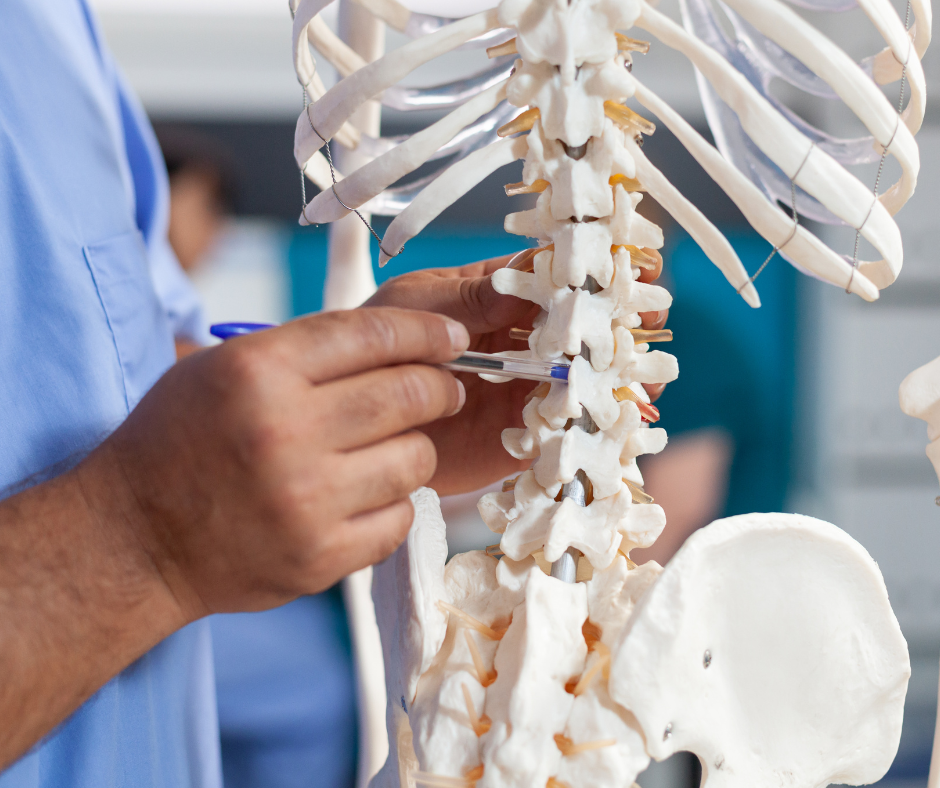24/7 online booking

Can Osteopathy Help Spinal Stenosis? A Holistic Approach to Managing Pain and Mobility
Spinal stenosis is a condition that affects many people, particularly as they age. It occurs when the spaces within the spine narrow, which can put pressure on the nerves that travel through the spine. This pressure can lead to a range of symptoms, from pain and numbness to difficulties with mobility. While surgery and medication are common treatments for spinal stenosis, many people are now exploring osteopathy as a complementary approach. But can osteopathy really help with spinal stenosis? In this blog, we’ll discuss how osteopathy can support those living with this condition.
Understanding Spinal Stenosis
Spinal stenosis typically occurs in the neck (cervical spine) or lower back (lumbar spine). The narrowing of the spinal canal can be caused by various factors, including:
- Age-related wear and tear: As we age, the discs in our spine can degenerate, and the ligaments may thicken, leading to a narrowing of the spinal canal.
- Osteoarthritis: This common form of arthritis can cause the formation of bone spurs, which can narrow the spinal canal.
- Herniated discs: When a disc in the spine bulges or ruptures, it can press on the nerves, contributing to spinal stenosis.
- Congenital factors: Some people are born with a naturally narrow spinal canal, which may predispose them to spinal stenosis.
Symptoms of Spinal Stenosis
The symptoms of spinal stenosis can vary depending on the severity and location of the condition. Common symptoms include:
- Pain: This can occur in the neck, lower back, or legs, and may worsen with activities like walking or standing.
- Numbness or tingling: Affected areas, particularly the arms or legs, may feel numb or tingling due to nerve compression.
- Weakness: Muscular weakness can occur, particularly in the legs, making it difficult to walk or maintain balance.
- Difficulty with movement: Reduced mobility and flexibility can make everyday activities challenging.
How Can Osteopathy Help with Spinal Stenosis?
Osteopathy is a holistic form of healthcare that focuses on the musculoskeletal system, using manual techniques to improve the body’s structure and function. For those with spinal stenosis, osteopathy can offer a non-invasive approach to managing symptoms, enhancing mobility, and improving overall quality of life.
1. Pain Management
One of the primary benefits of osteopathy for spinal stenosis is pain relief. Osteopaths use gentle manual techniques to alleviate tension in the muscles, joints, and ligaments surrounding the affected area. This can help reduce the pressure on the nerves, thereby relieving pain. Techniques such as:
- Soft tissue massage: This helps to relax tight muscles and improve circulation, which can alleviate discomfort.
- Joint mobilisation: Gentle movements of the spine and surrounding joints can improve mobility and reduce stiffness, making it easier to move without pain.
2. Improving Mobility
Spinal stenosis can significantly impact a person’s ability to move freely. Osteopathy aims to improve flexibility and mobility by working on the spine and associated muscles. Your osteopath may use techniques to:
- Enhance spinal alignment: Misalignments in the spine can exacerbate the symptoms of spinal stenosis. Osteopathic adjustments can help restore proper alignment, reducing nerve compression and improving function.
- Stretch and strengthen muscles: Targeted exercises and stretches can help to strengthen the muscles supporting the spine, improving stability and reducing the risk of further injury.
3. Supporting Circulation
Improving blood flow to the affected areas is another key aspect of osteopathic treatment. Poor circulation can contribute to inflammation and discomfort in people with spinal stenosis. By using techniques that promote better circulation, osteopathy can help reduce swelling and promote healing.
4. Holistic Lifestyle Advice
Osteopaths take a holistic approach to health, which includes advising on lifestyle factors that may be contributing to your symptoms. For example:
- Posture correction: Poor posture can exacerbate spinal stenosis symptoms. Your osteopath can provide guidance on how to improve your posture during daily activities, such as sitting, standing, and lifting.
- Exercise and movement: Staying active is important, but it’s crucial to engage in activities that are safe and beneficial for your condition. Your osteopath can recommend exercises that improve strength and flexibility without putting undue strain on your spine.
- Ergonomic adjustments: Simple changes to your work or home environment, such as adjusting your chair or bed, can help reduce pain and improve comfort.
When to Consider Osteopathy for Spinal Stenosis
If you’re living with spinal stenosis, osteopathy can be a valuable part of your treatment plan. It’s particularly beneficial for those looking to manage their condition without relying solely on medication or surgery. However, it’s important to have realistic expectations—while osteopathy can help manage symptoms and improve quality of life, it may not be a cure for spinal stenosis, especially in more advanced cases.
Before starting osteopathic treatment, it’s advisable to consult with your GP or specialist to ensure that it’s a suitable option for you. Your osteopath will also take a detailed medical history and conduct a thorough assessment to tailor the treatment to your specific needs.
Conclusion
Spinal stenosis is a challenging condition, but with the right approach, it’s possible to manage symptoms and maintain a good quality of life. Osteopathy offers a holistic, non-invasive option for those dealing with this condition, focusing on pain relief, improving mobility, and enhancing overall wellbeing. If you’re struggling with spinal stenosis, consider consulting a registered osteopath to explore how osteopathy can support your journey to better health and mobility.
If you would like to book and appointment with us, you can do so by clicking here.

Leave a comment